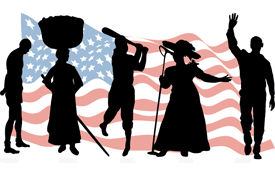0 How New Museums are Preserving Black Culture
- News
- by Hugh Smith
- 03/07/2007

Museums that focus on the critical role of African Americans in U.S. history and culture are more popular than ever, and several cities are planning new or expanded facilities to attract tourists and scholars.
Birmingham, Alabama has a civil rights district that includes the Sixteenth Street Baptist Church, the site of a 1963 bombing that killed four young girls. Another exhibit features the door to the jail cell where Martin Luther King Jr. sat in 1963 and wrote his “Letter from a Birmingham Jail.”
There are approximately 200 U.S. museums that focus on the African American experience. Several new projects are on the drawing board. Here are a few:
- A museum in Atlanta to exhibit the papers of Martin Luther King Jr.
- United States National Slavery Museum in Fredericksburg, Virginia
- National Museum of African American History and Culture in Washington, DC.
The old F.W. Woolworth store in Greensboro, North Carolina, is being converted into a museum that will display the “whites only” lunch counter where, in 1960, four black college students launched the sit-in movement to protest segregation.
One of the newest museums is the National Underground Railroad Freedom Center in Cincinnati, which opened in 2004. It tells the stories of the estimated 100,000 slaves who escaped via the “underground railroad,” a loose network of clandestine routes and safe havens provided by abolitionists, freed slaves and other sympathizers.
Not all African American museums focus primarily on slavery or civil rights.
Museums in Dallas and New Orleans, among others, are dedicated to African American art and culture.
Kansas City, Missouri, has the American Jazz Museum.
There’s the National Afro-American Museum and Cultural Center in Wilberforce, Ohio, which created an exhibit that traced African dance over 400 years.
In New York, the Museum for African Art is being expanded and moved to a new home where it will be “a cultural gateway to Harlem,” according to Mayor Michael Bloomberg.
The new museum in Washington, DC, which will take several years to develop, is going to cover the breadth of experience from African origins down to the present.
These museums are not just aimed at an African American audience, they are for everyone. They create the opportunity to really understand the history of black people in the USA.
Louise Fenner contributed to the research and wrote portions of this article.
Check out the Association of African American Museums for more details and links to black museums across the USA.